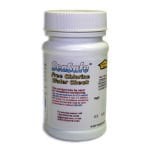We’d like to thank “Trinity” for asking the following question about trihalomethane levels in drinking water:
“In school we recently learned that chlorine added to drinking water by water treatment facilities reacts with organic contaminants in the water and forms harmful compounds called trihalomethanes. Does the EPA have a guidleine which limits the amount of trihalomethanes are considered safe?” — Trinity in Washington
First of all, we want to clarify something in Trinity’s question: Not all forms of chlorine added by water treatment facilities will cause trihalomethanes to form. Adding ‘free chlorine’ to water containing organinc contaminants will result in the formation of thrihalomethanes while adding ‘combined chlorine’, also referred to as chloramines, to water containing organic contaminants will not.
Unsure of the difference between free chlorine and total chlorine? The following Water Testing Blog postings will help:
- Free Chlorine, Combined Chlorine, Total Chlorine
- Free, Combined and Total Chlorine Re-Visited
- Testing Chlorine Levels — Drinking Water vs. Pool Water
Getting back to Trinity’s question, though, prior to 2004 the EPA set the maximum contaminant level (MCL) for trihalomethanes in drinking water at 100 parts per billion (ppb). In 2004 the EPA lowered the MCl for trihalomethanes in drinking water to 80 ppb. ( source )







